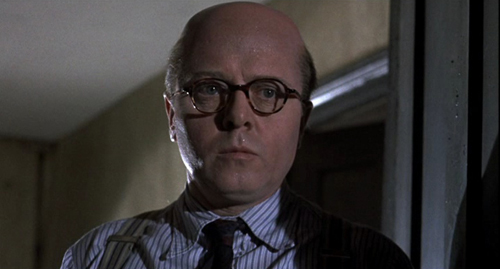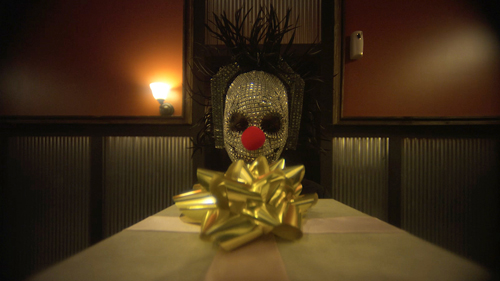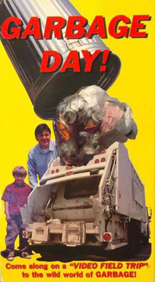
 In an obsession that’s just plain unhealthy no matter how you slice it, a Brian Bonsall-ian 5-year-old boy worships Gus, his friendly neighborhood garbageman. Said fixation burns at such a white-hot intensity, the tot sets his alarm early for garbage day, starred with serial-killer detail on his bedside calendar. With the pee-your-pants anticipation of Christmas morning, he rouses his father from sleep with “Dad! Dad! Wake up! It’s garbage day!”
In an obsession that’s just plain unhealthy no matter how you slice it, a Brian Bonsall-ian 5-year-old boy worships Gus, his friendly neighborhood garbageman. Said fixation burns at such a white-hot intensity, the tot sets his alarm early for garbage day, starred with serial-killer detail on his bedside calendar. With the pee-your-pants anticipation of Christmas morning, he rouses his father from sleep with “Dad! Dad! Wake up! It’s garbage day!”
I, for one, believe it’s safe to say this is why the straight-to-VHS children’s program bears the title of Garbage Day!, exclamation theirs — and, we can be certain, the misguided youth’s. Let’s call him “Kid” since he’s not given a name. In that spirit, for reasons you’ve already surmised, neither a writer nor a director is credited.
Dad (William Schreiner, who also produced) happily helps his son (Quinn Schreiner) tote their trash receptacles to the curb to await the arrival of their sure-to-stink pal in public service. Kid even has a Thermos of coffee tied around his neck for Gus’ consumption.
“I wish I could see everything on garbage day,” says a starry-eyed Kid, a budding li’l John Hinckley Jr.
“You do?” answers Gus (Steven Diebold), in an overtone decidedly hushed and sinister. “Well, maybe we can work something out.”
We’re spared the fevered negotiations and whatever exchange occurs. Instead, we leap right to Dad and Kid as they follow Gus on his route. Gus fills his truck with water balloons and lets his mentees watch them explode in the trash compactor. Do the taxpayers know Gus engages in such rascality on their dime?
Lest you risk injury, make sure you’re properly seated before the riotous bloopers involving the inability of the truck’s automated arm to lift cans correctly. Scoring this montage is a Yello-styled synth track that swaps hooks for the disturbing coos and giggles of an unseen baby. Sequence complete, the lid on an unsanitary garbage container lifts, revealing Kid. Way to supervise, Dad.
Informing his passengers that milk bottles are recycled to make Frisbees, Gus asks, “Why throw anything away when it can be made into something else?” I know Gus’ line is rhetorical, but does the oily man live in some fantasy land where used condoms, tampons and toilet tissue don’t exist?
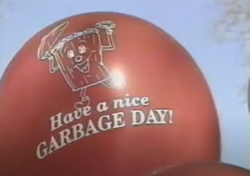 To demonstrate how bulldozers crush refuse pancake-flat, Gus smashes a line of perfectly good watermelons instead of, oh, I dunno, actual trash.
To demonstrate how bulldozers crush refuse pancake-flat, Gus smashes a line of perfectly good watermelons instead of, oh, I dunno, actual trash.
As the poignant 20-minute video reaches its end, our trio stands atop a landfill at sunset, looking over the fetid pit of filth as if it were the goddamn Grand Canyon.
To pay Gus back for the field trip, Dad and Kid have a crazy surprise awaiting him the next week: a trash bin filled with colorful balloons! Not only that, but the guys have gone to the trouble of getting them custom-printed with the line, “Have a nice GARBAGE DAY!” While this gesture may have come from the heart, it’s pretty stupid if you ask me. My reasons number three:
1. Because the balloons are helium, they immediately float away. Some gift!
2. Think of all the birds soon to be killed by the string-tied rubber orbs of death. Suffice to say, those avians will not be having a nice garbage day.
3. Even if Gus grabs a couple of balloons, you know he’ll waste no time popping them with his vehicle of doom, grooming Kid for the day they inevitably move to heads. —Rod Lott

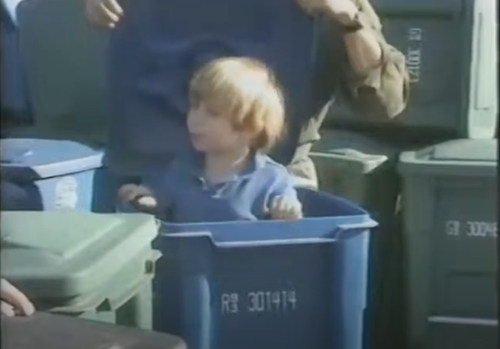
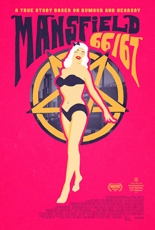
 Did Jayne Mansfield really join Anton LaVey’s Church of Satan? Was she its high priestess? Did the two have an affair? The documentary
Did Jayne Mansfield really join Anton LaVey’s Church of Satan? Was she its high priestess? Did the two have an affair? The documentary 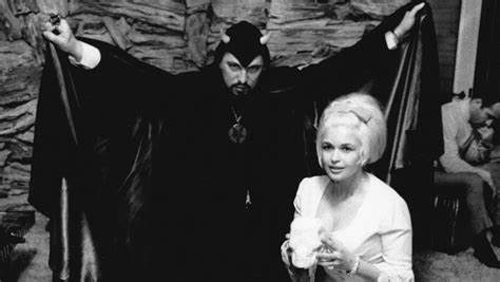
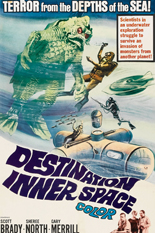
 Your basic Saturday-matinee movie of rear projection and rubber suits,
Your basic Saturday-matinee movie of rear projection and rubber suits, 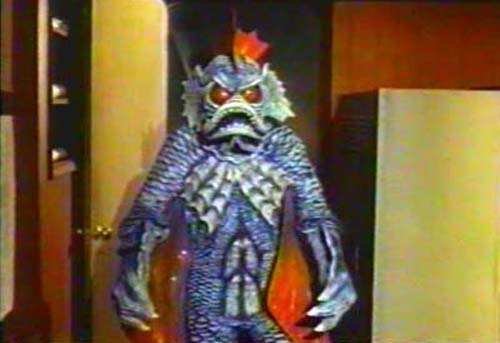
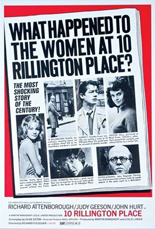
 One of Britain’s more notorious serial killers, John Christie claimed at least eight victims in the 1940s and ’50s. Thankfully, given its potency,
One of Britain’s more notorious serial killers, John Christie claimed at least eight victims in the 1940s and ’50s. Thankfully, given its potency, 